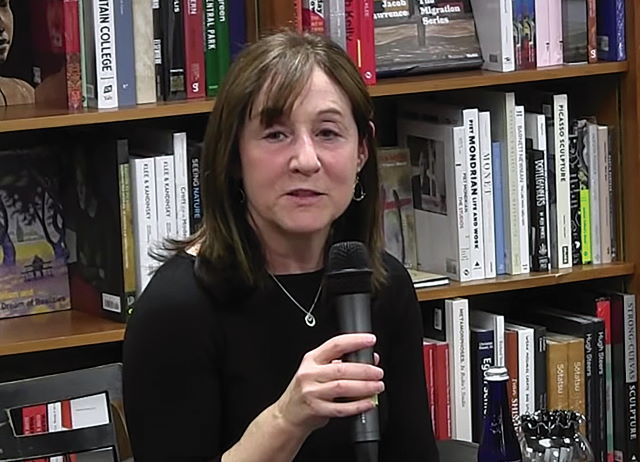Organization Trends
501(c)(4)s and “Dark Money”: Regulatory Struggles
 The New Yorker’s Jane Mayer wrote an entire book entitled Dark Money: The Hidden History of the Billionaires Behind the Rise of the Radical Right. License: https://bit.ly/2N6WgQ5.
The New Yorker’s Jane Mayer wrote an entire book entitled Dark Money: The Hidden History of the Billionaires Behind the Rise of the Radical Right. License: https://bit.ly/2N6WgQ5.

501(c)(4)s and the Etymology of “Dark Money” (full series)
Evolution of (c)(4)s | Origins of (c)(4)s | Regulatory Struggles
A Definition of “Dark Money” | Donor-Advised Funds | “Dark Money” Usage
Regulatory Struggles
Many post-1959 regulatory and administrative-law efforts to struggle with (c)(4)’s treacherous taxation-activism intersection are nicely overviewed in a 1995 paper by Raymond Chick and Amy Henchey. In one of them, a 1981 ruling heartening for activists, the IRS said that since an “organization’s primary activities promote social welfare, its lawful participation or intervention in political campaigns on behalf of or in opposition to candidates for public office will not adversely affect its exempt status under section 501(c)(4) of the Code.”
As Hayward intimated, there were other struggles that were disheartening to many activists, however. Beginning in 2010, conservative Tea Party organizations thought they were unfairly denied (c)(4) exemption by the IRS. The IRS contended it was acting in its proper discretion, and it proposed a set of revisions to the (c)(4) regulations in 2013 that would have excluded many of the groups from exemption. Specifically, the proposed revisions would have denied (c)(4) status to groups engaging in “candidate-related political activity,” and they sought to define in detail what that would mean.
“The proposed rules would plunge the [IRS] deeper into political regulation,” former FEC chairman and current IFS chairman Bradley A. Smith observed in a 2013 Wall Street Journal op-ed. They “would upset more than 50 years of settled law and practice by limiting the ability of certain tax-exempt nonprofits, organized under Section 501(c)(4) of the Internal Revenue Code, to conduct nonpartisan voter registration and voter education,” according to Smith.
The IRS asked the public for comments on the ’13 proposals and, after receiving a record number of them, it withdrew the proposed changes the next year.
Dougherty believes:
[There is now] opportunistic behavior: an “anything goes” approach to these activities by Section 501(c)(4) organizations. Based on the understanding that exempt activities must constitute the organization’s “primary” activities and that political candidate- and party-related activities are not exempt activities, they take the position that as long as expenditures on these activities do not exceed fifty percent of the organization’s expenditures—i.e., are less than primary—anything goes; the organization can engage in these activities regardless of the nature of the political activities and whether they are in furtherance of the organization’s social welfare purposes.
Others think political speech and social welfare have never really been, and needn’t now be considered, so separate and distinct. Why do we have elections, by this thinking, if not to consider how best to manage or improve our social welfare?
A Response to Citizens United
When Sunlight coined the term “dark money” in October 2010, the U.S. Supreme Court’s Citizens United v. FEC decision was nine months old. That High Court decision held that the First Amendment prohibits bans or limits on how much money a (c)(4) group can spend, so long as its spending is not coordinated with candidates for office. That decision and its effects were already drawing criticism from groups like Sunlight and the Center for Public Integrity, which track the flow of funds into politics and are especially critical of funds that support conservative causes.
Hence the need for the negative connotation.
The New Yorker’s Jane Mayer wrote an entire book entitled Dark Money in 2016. Its subtitle was “The Hidden History of the Billionaires Behind the Rise of the Radical Right.” Mostly, it liberally attacked conservatives Charles and David Koch. Left-of-center advocates like Mayer were displeased to see how, in the election cycles after Citizens United, (c)(4) funding began flowing to explicitly political causes, particularly on the conservative/Republican side. As my colleague Michael Watson and I observed in a February 2018 report for the Capital Research Center, this imbalance may have been as much a function of conservatives’ and Republicans’ challenges to incumbent office-holders as anything else, because in the election cycles since then, liberal and Democrat non-incumbents have seen their funding rise. Indeed, the left-of-center group Issue One reported that in the 2018 election, liberal/Democrat groups spent 54 percent of all “dark money,” while conservative/Republican groups accounted for only 31 percent.
A few lonely liberals urged a different attitude toward “dark money” during the post-Citizens United era. They knew that their side uses and will want to keep using the same type of funding. There “is a very real risk that if donors on the left become squeamish about supporting new 501(c)(4)s, the progressive community will lose the huge advantages of social-welfare organizations in the era of Trump, the worst possible time to sacrifice any tool in the toolbox,” wrote the Alliance for Justice’s Nan Aron and Abby Levine in 2017.
In the next installment, learn who coined the term “dark money” and why.



